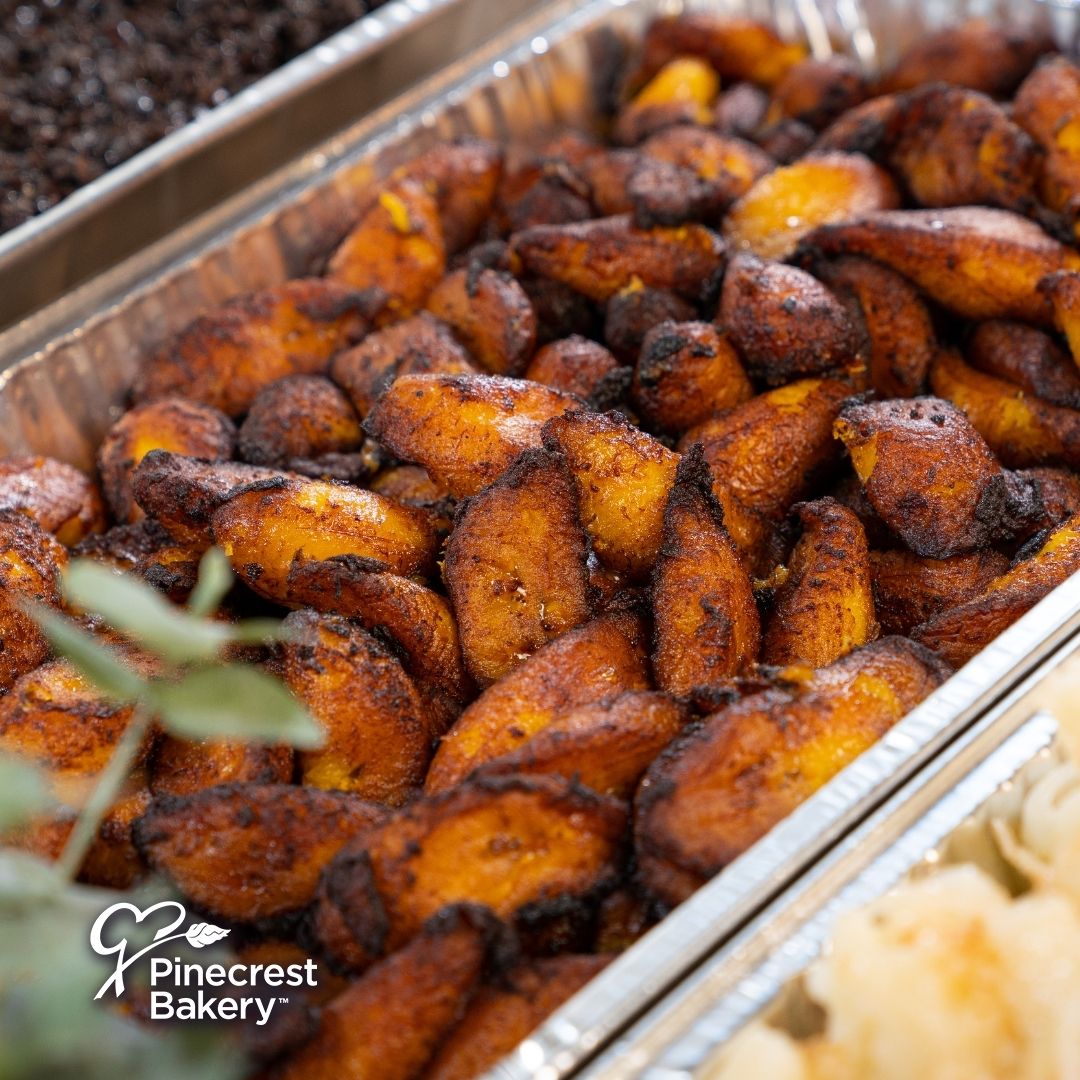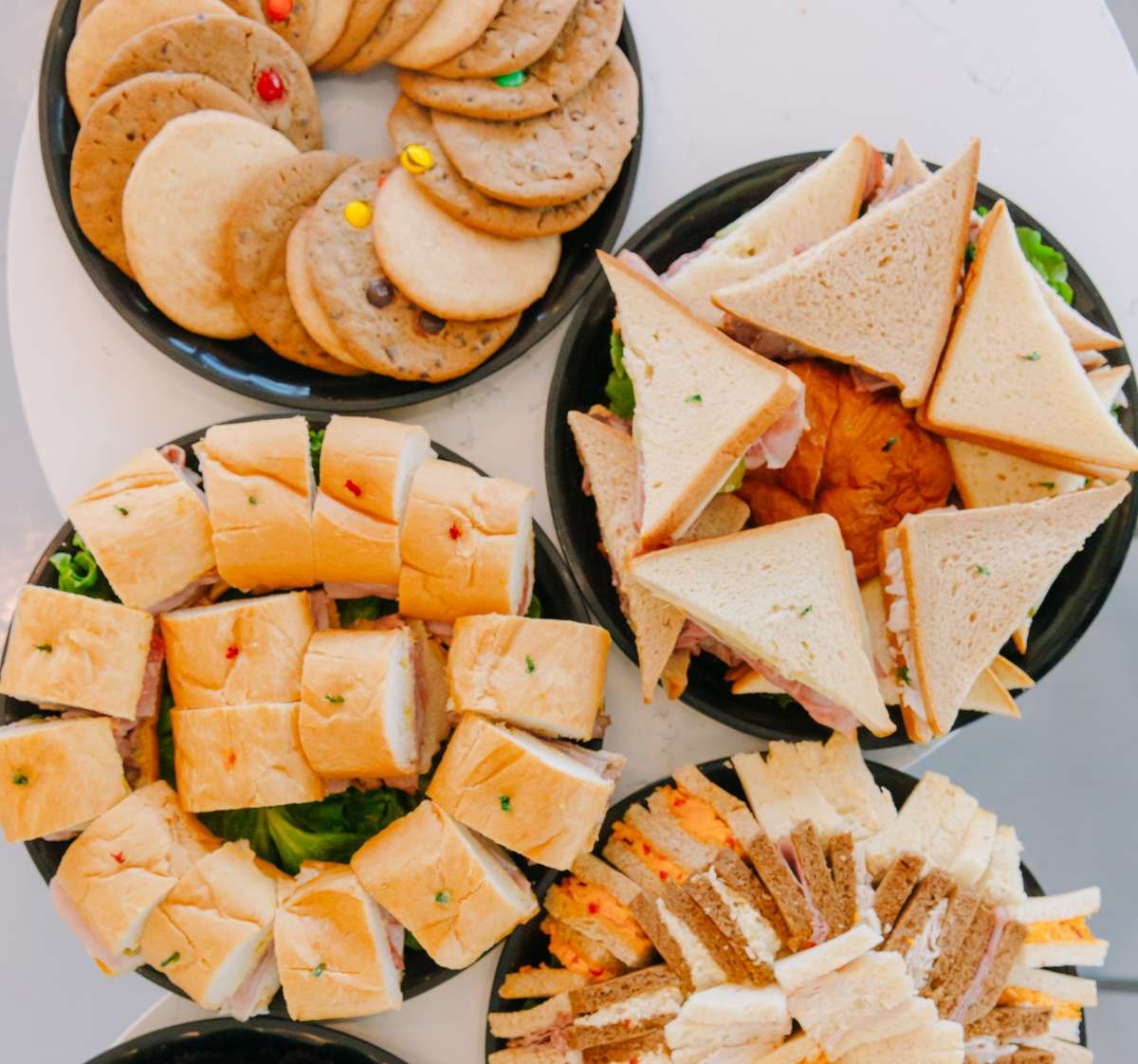Recognizing the Art of Bakeshop Products: From Fresh Baked Breads to Tempting Pastries and Finger Foods
The complex art of bakeshop items incorporates a range of methods and components that change basic elements right into culinary thrills. From the science behind the excellent loaf of bread, where fermentation and gluten advancement play critical functions, to the skill required for developing split breads, each element reveals an engaging narrative of craftsmanship. Furthermore, the convenience of finger foods shows how taste and texture can be artfully incorporated to engage varied taste preferences. As we explore these components, one might wonder: what underlying concepts regulate the success of these cherished productions?
The Science of Bread Making
At the heart of every loaf of bread exists a remarkable interaction of chemistry and biology. The procedure of bread making starts with the combination of flour, yeast, water, and salt-- each active ingredient playing a crucial role in the final product. Flour contains proteins, mainly glutenin and gliadin, which, when blended with water, form gluten (Birthday Party Maddington). This flexible network is important for capturing gases created throughout fermentation.
Yeast, a living organism, ferments the sugars present in the flour, generating carbon dioxide and alcohol in the procedure. The carbon dioxide gas produces bubbles in the dough, causing it to rise and establish a light structure. The temperature level and moisture during fermentation considerably influence yeast activity and, subsequently, the bread's taste and appearance.

Learning Pastry Methods
Just how can one accomplish the delicate balance of structure and flavor that specifies remarkable pastry? Understanding pastry methods calls for a deep understanding of ingredients, techniques, and the scientific research behind them. Essential to this craft is the choice of premium ingredients-- flour, butter, sugar, and eggs-- each playing an important function in the final product's flavor and texture.
The technique of lamination, which includes folding layers of dough and butter, produces the wanted flakiness in breads like croissants and puff pastry. Accuracy in temperature is important, as butter ought to remain cold to make certain ideal layers. Appropriate mixing approaches, such as the creaming technique for cakes, make sure also incorporation of air and fat, resulting in a light and ventilated crumb.
Moreover, maintaining the best moisture degrees throughout cooking can considerably affect the result, making sure that pastries climb properly and accomplish that golden-brown coating. The art of bread likewise demands persistence and practice; each attempt improves one's skill and understanding of the intricate balance required to produce irresistible pastries that thrill the senses. Proficiency in these methods eventually differentiates a skilled bread chef from an amateur.
Types of Finger Foods
The world of cooking thrills expands beyond breads to encompass a vast selection of finger foods, which are commemorated for their ease and flexibility. These bite-sized deals with are perfect for celebrations, providing a variety of tastes and textures that provide to varied tastes buds.

On the sweeter side, miniature tarts and bite-sized cupcakes offer a wonderful coating to any type of meal, attracting those with a wonderful tooth. Cheese and charcuterie boards offer as an innovative selection, allowing guests to personalize their bites with an array of meats, fruits, cheeses, and nuts.
Taste Profiles in Baking
Baking is a detailed dancing of flavor profiles that incorporates pleasant, savory, and umami notes to produce a harmonious experience for the taste buds. Recognizing these profiles is vital for bakers looking for to raise their developments.
Sweet taste typically offers as site web the foundation in baked items, with sugars, fruits, and all-natural sweeteners enhancing taste deepness. Components such as delicious chocolate and caramel introduce complicated sweet notes that can either control or match other flavors. Alternatively, full-flavored elements, usually located in breads and pastries, offer balance and contrast. Active ingredients like seasonings, herbs, and cheeses can transform a basic dough right into a multifaceted flavor experience.
Umami, regularly forgotten in cooking, plays a considerable function in enhancing tastes. Ingredients such as aged cheeses, fermented items, or even certain nuts add to a tasty depth that boosts total taste.
In addition, the interplay of level of acidity from components like buttermilk or citrus zest can lighten up flavors, supplying a rejuvenating counterpoint to sweet taste. By attentively incorporating these flavor accounts, bakers can craft products that resonate with diverse tastes buds, creating an extraordinary cooking experience. Eventually, grasping flavor accounts is vital to advancement on the planet of baking.
Important Cooking Equipments and Active Ingredients
Comprehending taste accounts in baking sets the phase for selecting the right devices and ingredients that assist in the creation of phenomenal baked products. The structure of effective cooking depend on having necessary tools at hand. Secret things include mixing bowls, determining mugs, and spoons for accuracy, along with a sturdy stand mixer or hand mixer for uncomplicated mixing. A reputable set of cooking frying pans-- such as sheet frying pans, loaf frying pans, and cake frying pans-- is important for accomplishing desired structures and forms.
Flour offers as the backbone of many recipes; picking the right type-- be it pastry, all-purpose, or bread flour-- can dramatically impact the end result. Baking powder and cooking soft drink are important for creating lift in cakes and breads.
Furthermore, this contact form including taste boosters like vanilla essence, spices, and citrus enthusiasm can raise your creations. By making sure accessibility to these basic devices and active ingredients, bakers can with confidence start their cooking journey, crafting a diverse variety of delightful baked items.
Final Thought
In verdict, the art of bakeshop products incorporates an extensive understanding of both creative strategies and clinical principles. Proficiency in bread production, bread prep work, and finger food presentation exposes the elaborate partnerships in between procedures and ingredients. Discovering varied taste accounts improves the baking experience, while vital devices and components offer the structure for success. Inevitably, the captivating globe of baking thrives on the harmonious interaction of science and creative thinking, leading to a myriad of fascinating culinary creations.
How can one achieve the fragile equilibrium of texture and taste that defines outstanding bread? Basic to this craft is the selection of high-grade ingredients-- flour, butter, sugar, and eggs-- each playing an important duty in the last item's flavor and texture.

Recognizing taste accounts in cooking sets the phase for picking the right devices and active ingredients that promote the development of exceptional baked goods. Checking out diverse taste accounts enhances the baking experience, while necessary tools and active ingredients supply the structure for success.